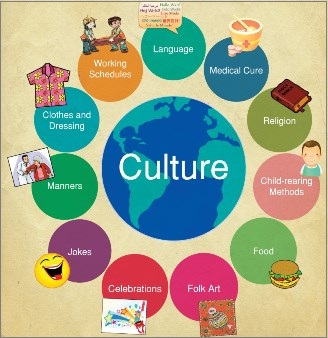Architecture and Culture of India
by Devender
0 5495
The culture of a place defines the people's way of life of that place. It tells us how the people of that area dress, what they eat, how they speak, how they worship and their art form among many other different things.
Architecture and Culture of India
Indian culture is one of the oldest cultures in the world and even during the bronze, India had an Urban Civilization. The Harrapan Civilization otherwise known as the Indus Valley Civilization dates back to 3300 BC to 1300 BC. Various kinds of cultures co-existed in the same country but there was still unity amidst cultural diversity. The Culture of India is reflected by the way live in India.
- Culture:
- Everything that makes the functioning of a society smooth and oriented is related to the culture of that society
- The expression of our nature in our living and thinking is all Culture
- Civilization vs Culture:
- Cultural Heritage:
- A nation also inherits its culture from its ancestors which is called national cultural heritage
- Culture is liable to change time after time but our heritage remains the same
- General Characteristics of Culture:
- Cumulative
- Diverse
- Ideational
- Subject to changes
- Shared by a group of people
- It is learned and acquired
- Dynamic
- Gives us a range of permissible behaviour patterns
- Importance of Culture in Human Life:
- Characteristics of Indian Culture:
- One of the major characteristics of Indian culture is Unity in Diversity
- The following characteristic makes the Indian culture unique
- Architecture vs Sculpture:
- Classification of Indian Architecture:
- Harappa Art and Mauryan Art
- Post Mauryan Art
- Gupta Age Art
- South India Architecture
- Delhi Sultanate
- Mughal Period
- Indo - Gothic Style
- Neo - Roman Style
Culture is the way of life of how an individual or a group live, think, feel, celebrate and share lives. Therefore, Culture refers to a human-made environment that includes all the material and non-material products of any groups life. These products are transferred from one generation to the next.
The kind of literature, music, dance, architecture, art forms and much more all depends on the culture in a deeper sense.
The highest marks of any culture are self-restraint in conduct, consideration for the feeling of others, and the rights of others. Culture consists of two products: Material and Non-Material.

| Material | Non-Material |
| Dress | Idea |
| Food | Thoughts and beliefs |
| Physical Goods | Ideals |
| Civilization | Culture |
| Making better ways of living, bending nature to fulfil our needs | It refers to the inner being, a refinement of head and heart |
| A poor man wearing old clothes can be considered uncivilized | However, he might be the most cultured person |
| A wealthy man in branded clothes might be considered civilized | However, he may not be cultured at all |
Civilization is considered the advanced state of Culture.
The culture that we inherited from our ancestors is known as Cultural Heritage. Humanity was also inherited as a whole culture. So, it is known as human heritage.
Architectural creations, material artefacts, intellectual achievements, philosophy, the pleasure of knowledge, scientific inventions and discoveries are all part of our heritage.
Culture is created by humans but at the same time, Culture is what makes us humans. It defines our traditions, beliefs, our ways of living. Culture is also linked very closely to the three universal values "Truth, Beauty and Goodness".
Culture of India
The word Culture is derived from the Latin term "Cult or Cultus" which means cultivating or refining and worship whereas the word "Sanskriti" is derived from the root 'Kri' meaning to do.
There are three words made from Kri "Prakriti, Sanskriti and Vikriti" where Prakriti is basic matter or condition, Sanskriti is refined matter or condition and Vikriti is modified/ decayed matter or condition. When Prakriti is refined it becomes Sanskriti and when it is broken or damaged, it becomes vikriti.
The fusion of different cultures took place over the ages to give shape to what is known as Indian culture today. The core of the Indian culture is spirituality and a value-based lifestyle however, it still has a temperament for science.
Indian Architecture
Indian architecture is not a modern phenomenon, it exists since early Paleolithic times. The evolution and growth of Indian architecture have been influenced by the rise and fall of different empires.
| Architecture | Sculpture |
| Design and construction of buildings using various types of material such as Stone, wood, glass, metal etc. | 3D work of art. It is made of a single piece of material |
| It depends on measurement and involves engineering mathematics | It doesn't depend on measurements and involves creativity, imagination |
1Ancient India
2Medieval India
3Modern India

Share:






Comments
Waiting for your comments